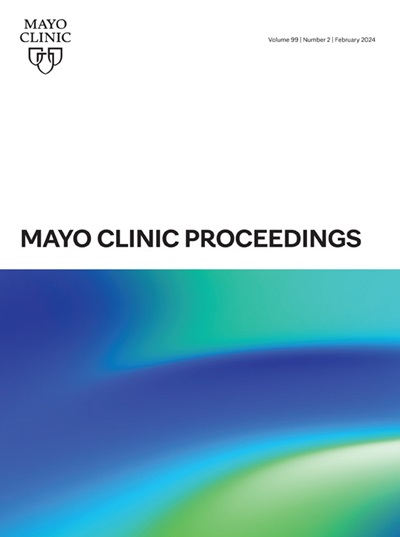Plasma Levels of Fibroblast Growth Factor 21 and Adverse Kidney Outcomes
IF 6.7
2区 医学
Q1 MEDICINE, GENERAL & INTERNAL
引用次数: 0
Abstract
Objective
To investigate the association between fibroblast growth factor 21 (FGF21) and adverse kidney outcomes.
Methods
From the prospective observational cohort study using data from the UK Biobank between March 13, 2006, and August 31, 2017, a total of 32,281 individuals with estimated glomerular filtration rate of 60 mL/min per 1.73 m2 and higher and urine albumin to creatinine ratio below 30 mg/g (cohort 1) and 3339 individuals with estimated glomerular filtration rate below 60 mL/min per 1.73 m2 or urine albumin to creatinine ratio of 30 mg/g and higher (cohort 2), all with baseline plasma FGF21 measurements, were included. The primary predictor was plasma FGF21 levels measured by proximity extension assay. The primary outcomes were incident chronic kidney disease (CKD) for cohort 1 and incident kidney failure requiring replacement therapy (KFRT) for cohort 2.
Results
In cohort 1, 804 (5.6%) participants experienced the CKD outcome during a median 13.7 years of follow-up. A cause-specific competing model revealed adjusted hazard ratios with 95% CIs of 1.01 (0.88 to 1.17), 1.01 (0.87 to 1.17), and 1.25 (1.08 to 1.44) for Q2 to Q4 compared with Q1 (Ptrend=.002). In cohort 2, 83 (2.5%) participants had KFRT during a median 13.7 years of follow-up. Elevated FGF21 levels were similarly associated with a higher KFRT risk, with adjusted hazard ratios of 2.79 (0.97 to 8.05), 3.91 (1.44 to 10.66), and 3.81 (1.44 to 10.08) for Q2 to Q4 (Ptrend=.01). Subgroup analysis revealed stronger association in non-CKD participants with obesity and dyslipidemia, whereas for CKD participants, this association was stronger in those with increased inflammatory markers.
Conclusion
Higher FGF21 levels correlated with heightened risks of adverse kidney outcomes in individuals with and without CKD. However, the metabolic abnormalities potentially influencing this association varied according to baseline kidney function.
血浆成纤维细胞生长因子21水平与肾脏不良预后。
目的:探讨成纤维细胞生长因子21 (FGF21)与肾脏不良预后的关系。方法:从2006年3月13日至2017年8月31日期间使用英国生物银行数据的前瞻性观察队列研究中,共有32,281例患者估计肾小球滤过率为60ml /min / 1.73 m2及以上,尿白蛋白与肌酐比值低于30mg /g(队列1),3339例患者估计肾小球滤过率低于60ml /min / 1.73 m2或尿白蛋白与肌酐比值低于30mg /g(队列2)。所有具有基线血浆FGF21测量值的患者均包括在内。主要预测因子为血浆FGF21水平。主要结局是队列1的慢性肾病(CKD)事件和队列2的肾衰竭(KFRT)事件需要替代治疗。结果:在队列中,1804名(5.6%)参与者在中位13.7年的随访期间经历了CKD结局。原因特异性竞争模型显示,与第一季度相比,第二季度至第四季度调整后的95% ci分别为1.01(0.88至1.17)、1.01(0.87至1.17)和1.25(1.08至1.44)(Ptrend= 0.002)。在队列2中,83名(2.5%)参与者在中位13.7年的随访期间患有KFRT。FGF21水平升高与KFRT风险升高相似,第二季度至第四季度调整后的风险比分别为2.79(0.97至8.05)、3.91(1.44至10.66)和3.81(1.44至10.08)(p趋势= 0.01)。亚组分析显示,非CKD参与者与肥胖和血脂异常的关联更强,而对于CKD参与者,这种关联在炎症标志物增加的参与者中更强。结论:较高的FGF21水平与CKD患者和非CKD患者肾脏不良结局的风险增加相关。然而,可能影响这种关联的代谢异常根据基线肾功能而有所不同。
本文章由计算机程序翻译,如有差异,请以英文原文为准。
求助全文
约1分钟内获得全文
求助全文
来源期刊

Mayo Clinic proceedings
医学-医学:内科
CiteScore
16.80
自引率
1.10%
发文量
383
审稿时长
37 days
期刊介绍:
Mayo Clinic Proceedings is a premier peer-reviewed clinical journal in general medicine. Sponsored by Mayo Clinic, it is one of the most widely read and highly cited scientific publications for physicians. Since 1926, Mayo Clinic Proceedings has continuously published articles that focus on clinical medicine and support the professional and educational needs of its readers. The journal welcomes submissions from authors worldwide and includes Nobel-prize-winning research in its content. With an Impact Factor of 8.9, Mayo Clinic Proceedings is ranked #20 out of 167 journals in the Medicine, General and Internal category, placing it in the top 12% of these journals. It invites manuscripts on clinical and laboratory medicine, health care policy and economics, medical education and ethics, and related topics.
 求助内容:
求助内容: 应助结果提醒方式:
应助结果提醒方式:


